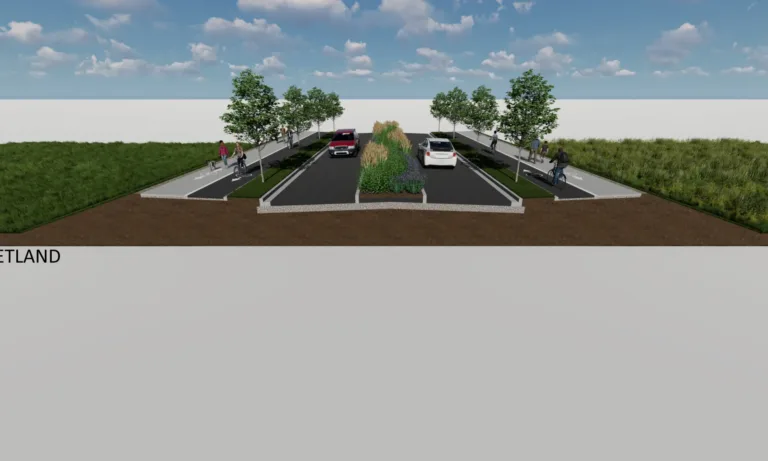
- Transportation
Project Highlights
- Widening of an approximately 1-mile stretch of old county roadway to improve safety and mobility to nearby commercial areas and schools.
- Coordination with WSDOT local programs and region engineering to complete an intersection control evaluation and design improvements to the SR-503/SW Eaton Boulevard signalized intersection
- Successfully managed the NEPA categorical exclusion process to protect FHWA funding.
- Prepared key environmental documentation, including a Critical Areas Report, ESA no-effect letter, and wetland delineation.
- Achieved a no-effect determination for listed fish, minimizing agency review and documentation timelines.
Project Description
The SW Eaton Boulevard Improvements project in Battle Ground, WA, will transform a 2,700-foot corridor from a two-lane road to a three-lane arterial with dedicated bike and pedestrian facilities. The project includes modifications to the WSDOT SR503/Eaton Blvd. intersection to improve safety, mobility, and multimodal access. MacKay Sposito provided a comprehensive range of services, including traffic analysis, topographic survey, civil engineering design, land surveying, and environmental permitting.
MacKay Sposito led the NEPA categorical exclusion process to secure FHWA funding, preparing key environmental documentation such as a Critical Areas Report, wetland delineation, an ESA no-effect letter, and a Joint Aquatic Resources Permit Application. Despite evolving ESA guidelines, MacKay Sposito successfully secured a no-effect determination for listed fish species, streamlining approvals and minimizing delays.
In addition to civil and environmental services, MacKay Sposito coordinated closely with WSDOT SW Region engineering staff and the City of Battle Ground to align with agency standards and approval processes. The project also involved right-of-way acquisition support for over 20 properties and the preparation of an intersection modification plan for WSDOT review.
Stormwater retrofits were a key component, adding water quality facilities to an area with no previous treatment. Improvements included the design of filter cartridges and proprietary biofiltration facilities in compliance with WA Department of Ecology stormwater requirements and the Department of Ecology TAPE program. The team worked with City staff to develop preferred options that met treatment and performance goals.